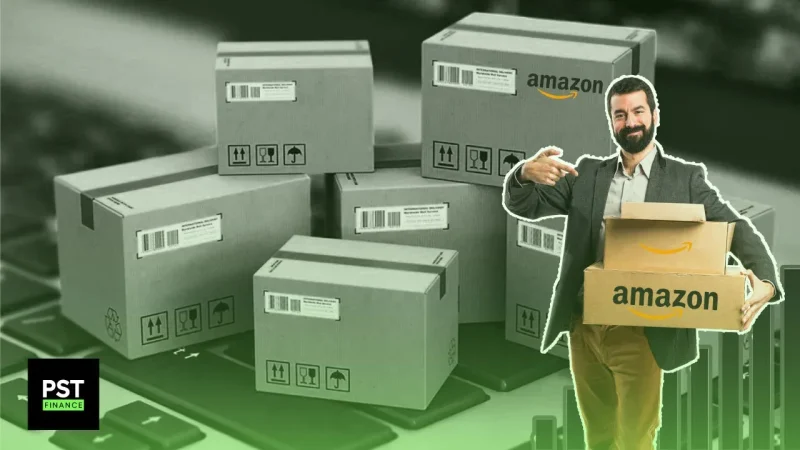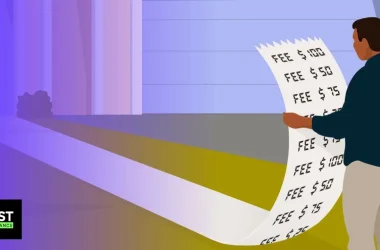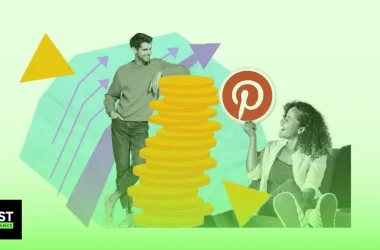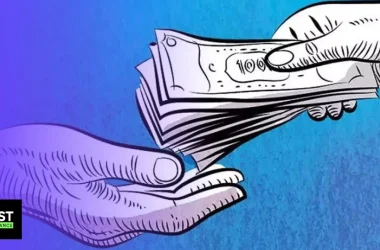Whether you’re looking for a great side hustle, or dreaming of building a profitable business, selling on Amazon (NASDAQ: AMZN) just could be your golden ticket to success. But, not a lot of people know that they can sell an Amazon business for maximum profits.
Picture this: starting off with just $1,000 and transforming your Amazon business into a thriving enterprise that could potentially sell for a staggering $200,000 or more. If you want to do this, here’s the ultimate step-by-step guide of running an Amazon business.
Picking the Right Products
If you’re currently thinking about starting an Amazon business, then you might’ve found yourself wondering about what products you should sell on the platform. Amazon offers great potential for new sellers to grow, but that doesn’t mean that you can just list any product and expect to see instant sales. In order to find the right products to sell, you need to do really good research about what sells well on Amazon, and you can do that very efficiently and effectively using an Amazon product research software. This is because product research software gives you real data for current Amazon products, and it also helps you analyze the competition to see if a product is in a good niche.
There are many software programs for analyzing Amazon products, but the most popular ones are called SmartScout and AMZScout. These programs can help validate the level of demand and competition for your product, or for some other popular products on the marketplace. This is extremely important, because a product may be very popular and have strong trends, but if the market is saturated, you’ll have a tough time generating a profit.
In general, the best selling products on Amazon are kitchen gadgets, so you can open Amazon up on your desktop and look up any kitchen gadget that you think would be a good idea to sell, then run the software. The app will show you sales data for the top products that popped up after your search, and this data includes data on sales and prices for each product, as well as the number of sellers and how much fees they pay to have their products fulfilled by Amazon. Not only that, but the data can also include important metrics like the product’s net profit margin.
Gated v.s. Ungated Products
After doing your due diligence and deciding on a product you want to sell, you need to understand the difference between gated and non-gated products on Amazon, and how that can affect your sales. If Amazon specifies a product as “gated”, it means you aren’t allowed to sell it on the Amazon platform, and if it’s non-gated, then it’s clear for you to sell. If you’re starting out by selling well-known brands on Amazon, then you should know that most of the items will be gated, and the only thing that Amazon will consider non-gated is books.
But, you can actually obtain a manufacturer’s invoice from a distributor who sells that brand or product, and then submit that to Amazon to “un-gate” that product, and a lot of major retailers that sell these products, like Walmart (NYSE: WMT) and Target (NYSE: TGT), will actually send you invoices that will work for un-gating the products. Don’t try to un-gate as many products as possible at first, because you might end up not even selling them, and Amazon sometimes does the un-gating automatically for you once you start selling more products.
Getting Started with an Amazon Business
Something that a lot of people do after finding out the product they want to sell on Amazon is go to Chinese suppliers like Alibaba (NYSE: BABA) and find the exact same product, or something very similar, for very little money. They then buy the Alibaba product for cheap and then sell it on Amazon for 5X the price. If this sounds like easy money, the reality is very different, as starting an Amazon business and making it profitable is extremely challenging and requires a lot of time and effort.
Creating an Amazon Seller Account
First of all, you need to apply to sell on Amazon by creating a seller’s account, and this is something you can do very easily on Amazon’s website. Keep in mind that you’ll have to put in things like your bank account number, credit card information, tax information, and so on. You might also have to do a video call with some Amazon employees just so they can confirm your identity and make sure that you aren’t signing up under someone else’s name.
Another thing that you should keep in mind is that it usually takes Amazon a week or two to accept your application, so be patient and don’t freak out if you don’t get a response right away. Selling on Amazon isn’t free, so after signing up, you’ll have to decide which selling plan to subscribe to. There are two selling plans on Amazon, the individual selling plan and the professional selling plan.
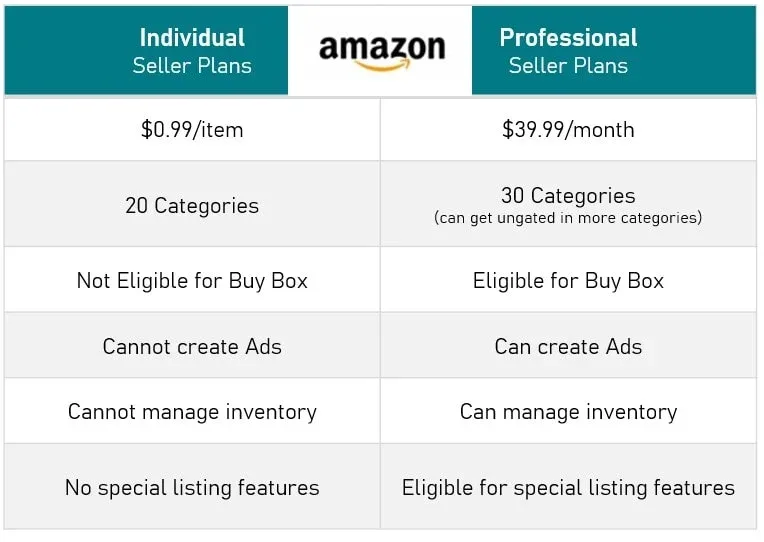
If you’re a beginner, then you might want to start with the individual selling plan, mainly because it works on a pay per sale basis, meaning that you pay Amazon a fee of about $0.99 on each sale you make, on top of other fees like the fulfillment fees. On the other hand, the professional selling plan works on a monthly subscription basis, meaning that you pay Amazon $40 per month, whether your products are actually selling or not. But, keep in mind that you can’t create ads on the individual plan, and you also can’t do free shipping with it, while you can do free shipping on the professional plan. You could just start out with the individual plan and switch to the professional plan once your business starts picking up.
Amazon FBA v.s. Amazon FBM
The two fulfillment options offered by Amazon for its sellers are called FBM and FBA, or fulfilled by merchant and fulfilled by Amazon. Basically, the FBM option is just like selling on eBay (NASDAQ: EBAY). Meaning, it’d be you storing the item, packing it, and then shipping it to the buyer once it sells. The fees for this range between 6% to 25% of the sale, depending on the category of the product you’re selling, but for most categories, it’s usually 15%.
If you pick this option, you might need to go to the shipping settings on your account and set your shipping template based on your exact location and the types of item that you’re shipping, and when an item gets sold, you’ll get a notification in the orders tab of your account, then you can click on buy shipping and get a list of shipping services that you can choose from to fulfill the order. It might be tempting to use a third-party shipping company to save money, but we wouldn’t recommend that since the products you sell are only insured if you buy shipping through the Amazon platform, so it’s better to be safe than sorry. If you want extra safety, you can pick the second option, which is FBA. This means that you ship your items to Amazon’s warehouses, and then Amazon will take care of everything else for you. Not only that, but Amazon can tag your product listing under Amazon Prime, which can significantly boost sales.
FBA also makes Amazon take on all the customer complaints as well as the returns. By now, you must be wondering about the catch, and of course, there’s always one. FBA fees are a lot higher than FBM fees, and these fees differ depending on the item as well, so you can download the Amazon seller app to view all of the fees and use the built-in calculator to calculate the amount of money that you’ll have to pay depending on your fulfillment plan.
Seller Central
Seller Central is what you’ll be using to list the items you want to sell. It is available on desktop, and it also has an app but it can be very hard to use since it’s very glitchy, so you might want to stick to the desktop version. Basically, Seller Central has everything you need to sell on Amazon. You use it for things like listing new inventory, managing that inventory, dealing with returns and shipping. It’s important to note that listing items on Amazon isn’t the same as listing items on eBay, where you make your own listing. If you open an Amazon seller account now, you’ll only be able to post edited old listings that have been already made by other people with older accounts from back when Amazon allowed people to make their own listings, so don’t expect to be able to list brand new products that have never been sold on the Amazon platform before.
There are two ways you can find these listings, and the first one is by clicking the camera icon on the top right of the Amazon Seller app, and using that camera to scan the product that you have, and if that item is listed on Amazon, the app will bring it up and show you all the people selling it. If nothing comes up, you can try manually searching for the product by its product code, or UPC, and if it still doesn’t come up, you could still get listings of similar products. Once you find the product, listing becomes really easy. You just have to find a seller that matches what you’re doing. For example, if you have prime shipping, then you need to find a seller that has prime shipping, and the same thing applies if you’re shipping the product yourself. Then, you click “list” and set your quantity, price, and you’d be good to go.
How to Grow Your Amazon Business
First of all, you should understand that your product won’t even start showing up in the search results unless you have from twenty to thirty reviews on it, and the reviews need to be really good because people won’t ever buy your product if it has two or three-star reviews, so you want to aim for five-star reviews.
Getting Reviews
It might be tempting to buy fake reviews, but if Amazon finds out your reviews are fake, you’ll literally get banned from the entire platform. Not only that, but Amazon might be able to detect it if you’re making your friends and family buy the product to leave good reviews, which also puts you at the risk of getting banned.
To get good reviews, you might want to put in some effort when packaging your product. For example, you can include an eye-catching “thank you” card that asks people to leave reviews, and use bright colors in its design so your customers will see it. You can also start a social media account for your business, and ask followers on it to leave reviews when they buy your products. For Amazon, this isn’t the same as when you ask family and friends to leave reviews, so you won’t get banned.
If you do this and still have less than 30 reviews, you can join the Amazon Early Reviewer Program, in which Amazon sends shoppers a gift card in exchange for their reviews on your products, and you can receive up to 5 reviews from this program. You can also submit your products on Amazon Vine, which is a program that allows you to submit 30 units of your products, which are then shipped to specially selected Amazon Vine reviewers, but keep in mind that these reviewers don’t have to pay for the product or shipping. This means that you’ll be sacrificing the potential money you could’ve made on these products, but you may have a better chance of receiving more detailed reviews through this program, than you would through other channels.
The Buy Box
You should also keep the “buy box” in mind, and the buy box is something a lot of Amazon gurus online talk about, but don’t actually explain in detail. Basically, the buy box on Amazon is the orange box that says “Buy Now” when you search through products. If you subscribe to the individual selling plan, you aren’t eligible for getting the buy box on your products, so there could be multiple sellers on the same listing on Amazon but only one of them will have the buy box on their product. In other words, if you have the individual plan, the buyer would have to look through other sellers that have the professional plan first before they see you and your product. And if you have the professional plan but do FBM, someone with Prime shipping will have much better chances of getting the buy box than you do.
A good way to get around this is to go slightly below the price of the seller with the buy box, or match the lowest price of someone with a Prime listing, because once they sell out, Amazon will rotate the buy box and it’ll go to you. If you have the professional business plan and FBA, then you probably could try pumping your prices up. Most of the time, people won’t mind paying a premium just for the convenience of buying everything they need from one place, or Amazon in our case, and they might even be willing to pay extra to get free shipping, so your sales might not be affected negatively if you raise the prices.
Another thing that you should consider in order to grow your Amazon business is the key performance metrics of the business. Basically, there are three metrics that you need to pay attention to to keep your Amazon business healthy, and they are the order defect rate, which should be kept under 1%, the pre-fulfillment cancel rate, which should be kept under 2.5%, and the late shipment rate, which should be kept under 4%. If you dip below these rates occasionally, don’t get too worried because it’s normal for that to happen if you’re just starting out, and Amazon might even tell you that your account is at risk of getting banned, but the more items you sell, the less these percentages will get.
You might have to deal with returns often, since Amazon offers free returns to its customers, but if the customer returns the product to you in a worse condition than when they received it, you can actually charge them a restocking fee of around 50% of the price. A good tip to reduce returns is just basically selling a product that doesn’t require a size, so if returns will bother you, don’t sell things like clothes or hats.
Selling Your Amazon Business
There’s only one thing you can do after your Amazon business grows that’s better than keeping it, and that’s selling it to someone else. You can actually start your Amazon business with $5,000, and sell it for $500,000.
Why People Buy Amazon Businesses
Now, you might be wondering why would anyone buy an Amazon business in the first place, or, why would anyone pay you 40X or 50X the monthly income your Amazon business generates, instead of just building their own Amazon business themselves. People buy established businesses because they want to skip over the long time it takes to build a business from the ground up. Another reason why some people buy established businesses is that they might already have another business that aligns well with your business, and what they want to do is combine the two to create a sort-of Amazon business empire.
Another thing is data levers. There is tons of data that exists within an Amazon business that experts on Amazon’s algorithm or logistics can take and use to improve the business and turn it into something else entirely, making the return on their investment far bigger than what you think is possible. Some Amazon businesses are also being bought by small investment firms that raise anywhere from $2 million to $10 million from investors, acquire a portfolio of businesses, streamline the operations, and use their expertise to scale the businesses.
Valuing Your Amazon Business
The basic formula of an Amazon business valuation is just taking your 12-month average net profit, and multiplying that by a multiple. Now, that multiple can range from 20X to 60X, but let’s take a look at an example for more clarity. If your Amazon business makes $5,000 in average net profit per month, then you’d be looking at a valuation of about $200,000, or if you’re making $15,000, you’d be looking at a valuation of around $600,000. Still, you should request multiple valuations from more than one M&A firm, to get a good idea of how much your business is worth.
If you decide to sell your Amazon business, you can talk to a broker to help you do it. If you google Amazon business broker, you’ll get a lot of results and many websites of companies that offer this service, but if you don’t want to hire a broker to avoid paying a commission, then you can try to find a buyer yourself by advertising that your business is for sale on social media platforms or a marketplace like Flippa.
You can also get in touch with Amazon marketing agencies like Amazon SEO Consultant, and these agencies can help you boost your business’ value before the sale, as well as connect you directly with buyers. Amazon SEO Consultant can even buy your business itself if it sees it fit. Just keep in mind that you’ll have to tell Amazon that you’re selling the business, and you’ll have to talk to a customer service representative about transferring the ownership of your Amazon seller account. Before you start transferring any assets, it’s important to make sure that you have Amazon’s written notice and consent that your business is being transferred to someone else.
Tips for Maximizing the Valuation
You need to pay attention to the number of products that you’re selling. Buyers like to see a certain number of products being sold, meaning that if your Amazon business only sells one product, a buyer might view it as risky because of the lack of diversification, just like with any other investment. But, that doesn’t mean you should be selling hundreds of products without focusing on a niche that will make you successful, you should find balance between focusing on a niche and selling more than one product to help increase your Amazon business’ value. For example, if your Amazon business is worth $100,000, and you have 300 products listed, that’s considered a lot for your business at its current valuation, and a buyer might turn away from it because they wouldn’t want to manage 300 products.
The next tip is to create an income statement for your business, and this is actually the most important document in your entire business, and you won’t be able to sell your Amazon business without it. If you don’t enjoy the accounting side of running a business, you need to hire a professional accountant to look at your business and create financial statements for you.
Finally, if you want to make the most of your exit, then you need to make at least $200,000 a year from your Amazon business, and have it be at least three years old. This makes it seem like an already proven concept, which reduces risk for buyers. Also, make sure that your business is somewhat automated, or even hire people to manage it for you before you sell it, since buyers will appreciate the fact that the business can provide them with passive income, or that they won’t have to work there for more than 15 hours per week, for example.
The Bottom Line
To conclude, we can say that now might be the best time to start an Amazon business with the goal of making a profitable exit in the end. There’s a really big market for Amazon businesses and some companies put away billions just to acquire an Amazon business, but keep in mind that you should only sell your Amazon business if that aligns well with your goals, whether they’re personal goals, or professional goals. In other words, if you enjoy running your Amazon business and think of it as a great side hustle or even full-time business, then you should definitely keep it.
Disclaimer
Please visit and read our disclaimer here.





